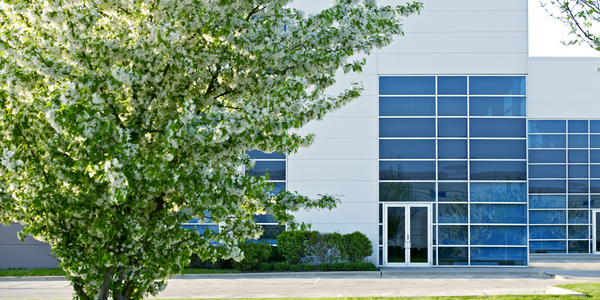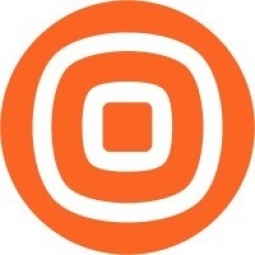Technology Category
- Analytics & Modeling - Real Time Analytics
- Platform as a Service (PaaS) - Application Development Platforms
Applicable Industries
- Cement
- Glass
Applicable Functions
- Procurement
- Sales & Marketing
Use Cases
- Chatbots
- Real-Time Location System (RTLS)
Services
- Cloud Planning, Design & Implementation Services
- System Integration
About The Customer
Salmoiraghi & Viganò is a renowned Italian eyewear and contact lens retailer, part of the Luxottica group. They have been providing luxury eyewear since 1870 and have grown into one of the largest industry leaders, winning the Luxottica “Brand of the year” award for the last 12 years consecutively. They offer a range of optical services and high-end eyewear brands, from Gucci to Ray-Ban, online and in over 400 stores across Italy. Their commitment to providing impeccable products with outstanding service is reflected in the historic success of their brand.
The Challenge
Salmoiraghi & Viganò, a leading Italian eyewear and contact lens retailer, faced significant challenges in providing customer service during the 2020 pandemic. The lockdown measures and store closures severely impacted their ability to provide in-person care and service to their customers. Their existing customer service solutions, which included an outsourced call center and email, were inadequate to meet the rising customer support demands. They experienced slow response rates for email queries, decentralization of data, and a lack of metrics to measure agent performance and customer support. These challenges hindered their ability to improve or personalize their customer service. Recognizing the need for digital transformation, they sought a cloud communication platform provider that could understand their business requirements and customer needs.
The Solution
Salmoiraghi & Viganò chose WhatsApp as the starting point for their digital transformation, given its popularity in Italy. They partnered with Infobip, a Meta Business Partner, to build an intuitive customer support solution that could be integrated into their existing systems. The solution comprised of three components: Answers (a chatbot building platform), Conversations (a cloud contact center), and the WhatsApp Business Platform. Infobip's local implementation experts and professional services team onboarded and trained Salmoiraghi & Viganò employees on the best contact center practices and helped them build an intuitive chatbot with Answers. The chatbot could answer simple queries in real-time, conduct pre-qualification questions to determine which requests needed to be transferred to a live agent, and provide services available in-store or online. The integration of Answers and Conversations into their existing systems gave Salmoiraghi & Viganò a unified view of customer data and conversation history, enabling agents to provide contextual and personalized support.
Operational Impact
Quantitative Benefit

Case Study missing?
Start adding your own!
Register with your work email and create a new case study profile for your business.
Related Case Studies.

Case Study
System 800xA at Indian Cement Plants
Chettinad Cement recognized that further efficiencies could be achieved in its cement manufacturing process. It looked to investing in comprehensive operational and control technologies to manage and derive productivity and energy efficiency gains from the assets on Line 2, their second plant in India.

Case Study
Digital Transformation of Atlanta Grout & Tile: An IoT Case Study
Atlanta Grout & Tile, a Tile, Stone & Grout restoration company based in Woodstock, Georgia, was facing challenges with its traditional business model. Despite steady growth over the years, the company was falling behind the web revolution and missing out on the opportunity to tap into a new consumer base. They were using independent software from different vendors for each of their department information and workforce management. This resulted in a lot of manual work on excel and the need to export/import data between different systems. This not only increased overhead costs but also slowed down their response to clients. The company also had to prepare numerous reports manually and lacked access to customer trends for effective business decision-making.
.png)
Case Study
Discrete Manufacturing Industries (Fiberglass Pipe)
The implementation of ERP software in a Discrete Manufacturing organization needs to be strategic, irrespective of its size and capacity. The client had already implemented an ERP system which fulfilled their requirements but was not efficient enough. Efficiency here meant Synchronized Planning, Updating and Multisite Planning. Planning at client’s place was done outside the ERP system. Lack of proper synchronization to the ERP system paved way to huge delays in the changes getting updated in the system. These delays caused disruption in achieving delivery schedules. Multisite Planning is a solution to an organization which has multiple production units (may or may not be geographically separated) and thus needs planning across these units to synchronize production activities within them. The client also has multiple factories and hence Production Planning control is very essential in their case. Since Multisite planning was not possible with Baan ERP system, this was another bottleneck for the client.

Case Study
Revolutionizing Construction Equipment Rental: A Case Study on ProsRent and ENO8
ProsRent, a startup that won the 'Best Financial Opportunity' and 'Best Pitch' at CodeLaunch 2016, aimed to revolutionize the way construction professionals source and rent heavy equipment. In the construction industry, project managers and contractors typically rent heavy equipment from supply companies. However, predicting inventory can be challenging, and finding the required equipment at the right time and place can be a hassle. If the preferred vendor doesn't have the required equipment, it results in wasted time and money in searching for it, often leading to higher costs due to non-preferred rates and increased delivery costs if the vendor is located far from the job site. Suppliers, on the other hand, desired access to a wider base of trusted renters that they didn't have to vet themselves and wanted to offer dynamic rental pricing based on demand and availability in their market. ProsRent's challenge was to produce a minimum viable product that was fast and first to market but also strong enough to engender loyalty and repeat business from the target market.

Case Study
AI-based Automation for Commercial Office HVAC: A Verdigris Case Study
Modern buildings are required to run longer hours, support a variety of end uses, and contribute to higher levels of economic productivity, leaving a thin margin for error. However, even the most advanced building and environmental control systems have failed to adequately support facilities and operations management. Buildings are often inefficient and the people using them are underserved. To meet occupant comfort and maintain cost and energy efficiency, a dynamic, AI-assisted approach is needed.








